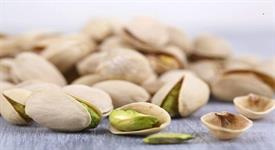Pistachio Shells Are Used to Reduce Water Pollution

other countries. Iranian families serve these heavenly tasting nuts in their gatherings, helping both their bodies and souls. But this is not how it ends.
INSF-funded researchers from Kerman University started thinking of using the Pistachio shells for a better reason: preserving the environment. But how?
You may have faced the global concern that exists for water and air pollution caused by industries, especially the heavy metal ions produced by industries and released in water. Environmental scientists have for many years thought of most effective ways to, at least, reduce the pollution. One of the main materials used in doing so is activated carbon.
Activated carbon refers to a group of materials with high specific surface area, porous structure and ability to adsorb chemical gases and liquids.
Activated carbon has proven to be efficient in removing organic compounds from air and water and as a result, it has become a well-known adsorbent or filtering media in waste water treatment and gas purification (including exhaust gas filtering).
Activated carbon is a very useful substance with numerous usages: in water industry, to remove the undesired taste, odor or color from water waste from factories; in gas refineries, in gas sweetening process; in petrochemical industry and oil refineries, to purify pharmaceutical drugs as well as edible and industrial oils; and in recycling solutions and chemical.
This substance is generally made of wood, coal, coconut shell, vegetable coal, shells, kernel, fruit stone, fruit seeds, hulls and husks and synthetic polymers such as rayon and polyacrylonitrile. Activation is the next step in the process, which is usually carried out in two ways – physical and chemical activation. Activated carbon has been developed into one of three types – powder, granular, and spherical.
For years, coal has been the most common material used to produce activated carbon, but recently and due to environmental concerns as well as the rather high cost of this material, scientists thought of replacing coal with coconut shell, wood, walnut shell, pistachio shell, olive seed and other similar organic materials that are otherwise regarded as waste and are not usually recycled.
Since nuts and specifically, pistachios, abound in Iran, their shells can be available at a lower cost. Therefore and as a result of its availability, low cost, low rate of pollution caused in the environment, and higher absorption capability, pistachio shells can be regarded as suitable replacement for coal or other materials in producing activated carbon.
In an INSF-supported study carried out in Kerman University, researchers have used pistachio shells as the starting material for activated carbon preparation. To increase the potential adsorption capacity of activated carbon, modifications such as immobilization of acidic group on the carbon active have also been implemented.
In their research, experimental parameters such as pH, contact time, initial concentration have been optimized. Application of activated carbon biocomposite as adsorbent of heavy metal ions and organic contaminants from aqueous solution and industrial wastewater have also been carefully examined.

